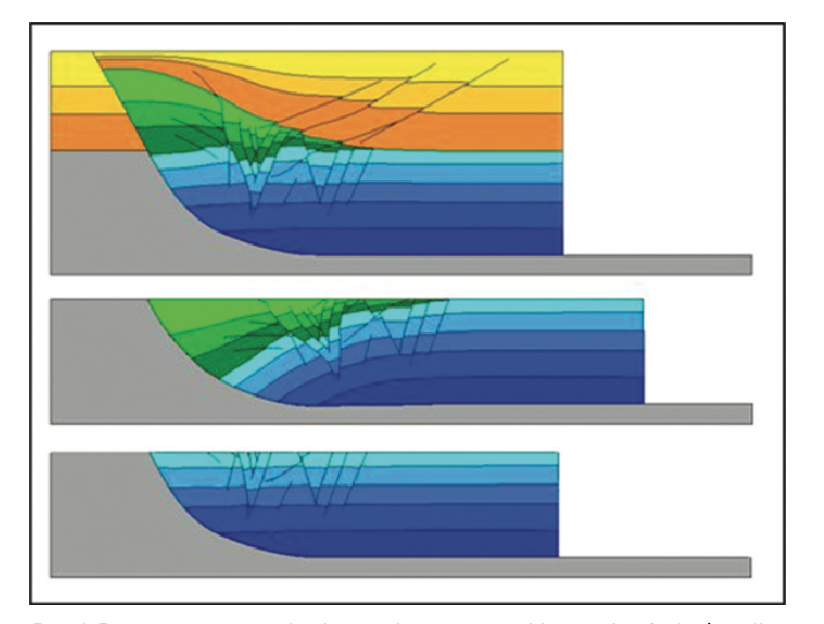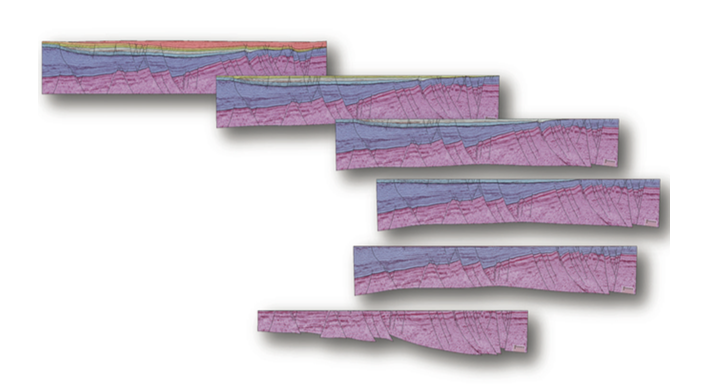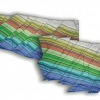Dynel2D
The Dynel2D* restoration and forward modeling tool enables the easy construction and analysis of cross sections, both in contractional and extensional settings. This innovative technology, based on finite element method, incorporates the fundamental principles of physics that govern rock deformation.
The identification and recovery of hydrocarbons requires an accurate geologic model of the reservoir structure. With a comprehensive set of tools, Dynel2D software checks the consistency of geological interpretations, reduces uncertainty in seismic interpretation, and builds more accurate under-constrained complex geological models.
Easy cross-section construction
The intuitive Dynel2D interface allows cross sections containing hundreds of faults to be built independently from the complexity of the fault network (multiple X, Y, and thrust faults are handled). A series of cross sections through complex 3D models can also be built and used for complementing, editing, or correcting structural interpretation.
After structural restoration, the original model can be corrected by altering the interpretation in restored space. This process allows structurally consistent models to be built, even in complex areas where little data is available.






